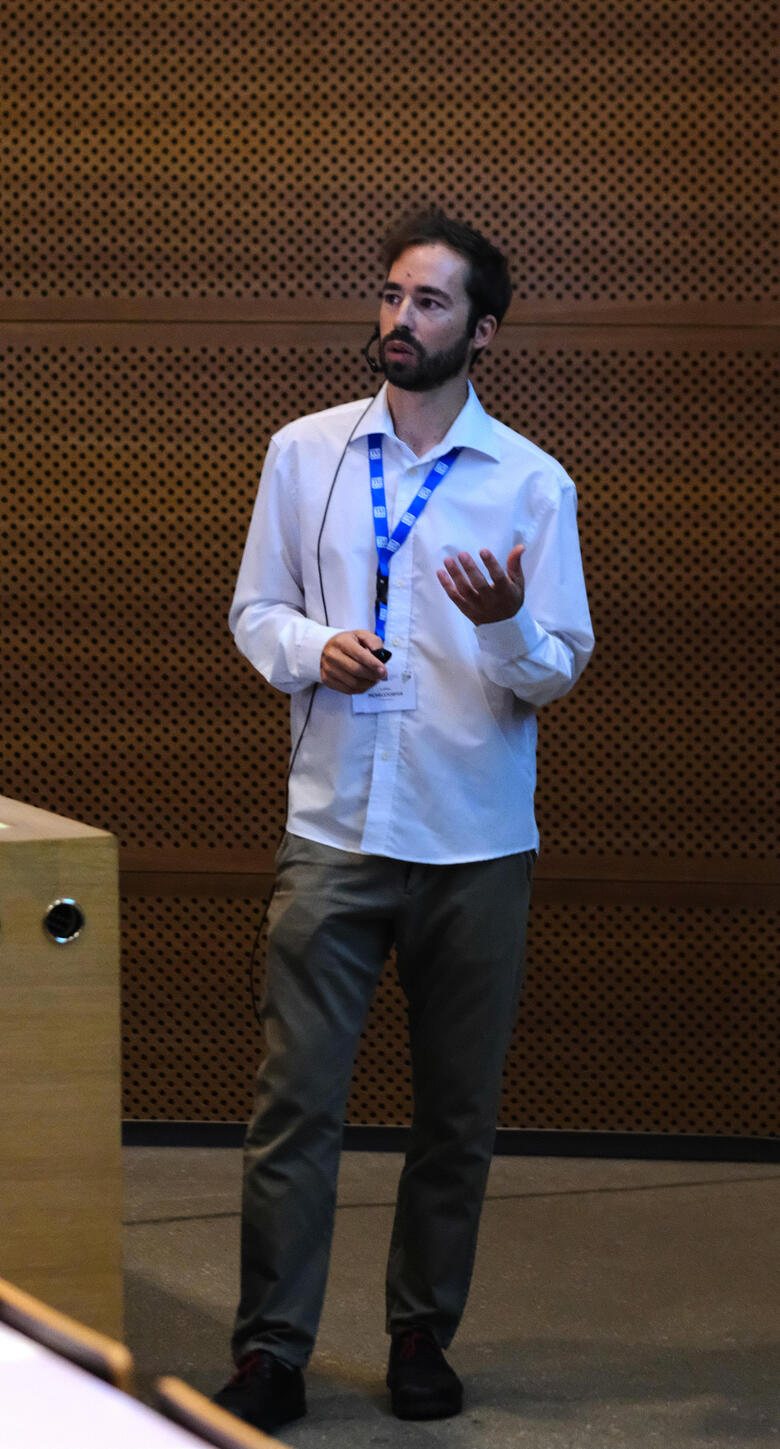pi-numerics
numeric solutions for science and business

Welcome to the webpage of Dr. Lukas Pichelstorfer alias pi-numerics. I am offering research services. My focus is the development and application of process-based models and model assisted data analysis.
© 2025 Lukas Pichelstorfer All rights reserved
Numeric representations
Model assisted data analysis
Semi-analytical solutions
Model development
Aerosol processes
autoxidation chemistry

© Dennis Dinu
Having graduated in physics in 2015, my main expertise is the description of aerosol processes and autoxidation (organic chemistry). A key approach in my work is to extract information on a process of interest from convoluted data by means of model assisted analysis. As an expert in process modelling, I'm generally interested in 0-dim descriptions, no matter what subject area.explore key approach
see CV
Publication list
Completed projects*
with University of Vienna, Austria on size- and time resolved quantification of nanoparticle growth
with University of Manchester, UK on developing a semi-empirical description of autoxidation chemistry
with School of Engineering Sciences, Lappeenranta, Finland on Algorithmic creation and optimization of autoxidation chemistry schemes
with University of Helsinki, Finland on air quality predictions
providing research services to Tampere University, Finland focusing the quantification of autoxidation chemistry and competing reactions from flow tube experiments
* For reasons of information privacy, contact details are not given here and can be provided upon request. If you are interested in details on the collaboration, please get in touch.
MyWay
It is my distinct aim to do innovative1 work, as an independent entity, however, embedded in lively cooperation networks. I focus to meet on eye-level2, work fair3 and resource-efficient4.
1 In current and previous works, innovative aspects were always key to success (e.g.: a new mathematical representation of the particle size distribution (PSD) preventing from numerical diffusion (Pichelstorfer et al., 2015); a novel method to retrieve time- and size resolved particle growth rates from PSD evolution (Pichelstorfer et al., 2018); a novel semi-empirical approach to quantify autoxidation chemistry (Pichelstorfer et al., 2025))
2 I aim to respect anyone I meet in the same way, no matter of sex, colour, race, age, wealth or career stage.
3 Wherever people meet, we typically observe power imbalances that, if not taken care of, are disadvantageous, typically for those lower in the power-hirarchy. A key criteria in science is publishing. This is why I apply authorship guidelines as proposed by Ghani et al. (2021). Further, I aim for publishing in open-access journals to remove access-barriers.
4 I believe that a scientific community aiming to promote an ecosystem-friendly (i.e., sustainable) lifestyle shall act exemplarily to be credible. Any codes developed by me avoid brut-force methods consuming considerable resources and can be run on PCs rather than on computer clusters. I reflect on and try to minimize the resources consumed by my work (as well as private) activities. The goal is to meet an ecosystem-compatible limit by e.g., usage of green electricity, avoidance of flights and preferring train usage (flights and train rides amounting to roughly 1.7 tons of CO2 since founding of pi-numerics in 2022 calculated using myclimate)
CV
Since 2022 Self-employed scientist “pi-numerics”.Academic education:
2018 – 2021 Postdoc II: Schrödinger Fellowship at University of Helsinki and University of Salzburg (return phase) on “Temperature dependent formation of HOM from BVOCs and AVOCs”.
2015 – 2018 Postdoc I: At University of Salzburg to continue the work on aerosol modelling
2010 – 2015 Doctoral study of physics at University of Salzburg: Scholarships in 2011 and 2014 awarded by University of Salzburg and by Austrian Forschungsgemeinschaft. The topic of the thesis is “Modeling dynamics of fresh, highly concentrated aerosols in containments”
2005 – 2010 Study of physics at University of Vienna: Master thesis (“Temperature dependence of heterogeneous nucleation - Experiments on polar seed particles and nonpolar vapor”) and final exams with distinction. I received a merit-based scholarship in 2010.Teaching: I’m active in teaching since 2008 in various settings (University courses, University entrance exams, customer training, summer schools) and topics (basic mathematics, basic physics, aerosol modelling, atmospheric chemistry, modelling autoxidation chemistry).Talks: Several (> 10) talks at international conferences and invited talks at UniversitiesReviews: Several reviews for Atmospheric chemistry and Physics, Chemical Research in Toxicology, Journal of Aerosol Science, PLOS ONE
Key Approach
The illustration above depicts a key approach in my work:
A parameter or population (P) is transformed to an (experimentally) observable (O) by a series of interlinked processes. In this depiction, one process reduces P, while another process causes a shift. To quantify the effect of an unknown process, the changes in O (i.e., ΔO) between two close enough1 points in time is investigated:
ΔO ≈ Δp1 + Δp2 + Δp3
Where Δp1, Δp2 and Δp3 represent the changes introduced by processes 1-3 within the time intervall of interest.
Considering the observed ΔO together with model simulations on the known processes allows to quantify Δp1 and Δp2, enabling to derive Δp3:
Δp3 = ΔO - Δp1 - Δp2
Note that the number of processes is not limited to three (there may be more or fewer processes).Examples:
(a) The described method is applied in Pichelstorfer et al., (2018) where P is a particle size distribution being transformed by deposition , coagulation and a growth process caused by unknown organic vapor species. In this work, we demonstrate the ability to determine size- and time-resolved growth rates from the timely evolution of a particle size distribution. The method is recommended by a high-impact protocol paper.2
(b) In a recent work on organic chemistry the method is applied to infer rate coefficients for autoxidation chemistry and competing reactions from modelled chemical ionization mass spectrometry data. Here, P is the mass spectrum. "Known" processes, in this work, are wall-interaction and dilution within a flow reactor. The method is capable of quickly (< 1s when run on a laptop) recovering a large number (>103) of rate coefficients with high precision.
Are you interested to see whether this approach applies to your data? Get in contact and share your situation.
1 Points in time are close enough, if the change terms inferred by the processes can be approximated as linear.
2 Dada et al. (2020) Nature Protocols







